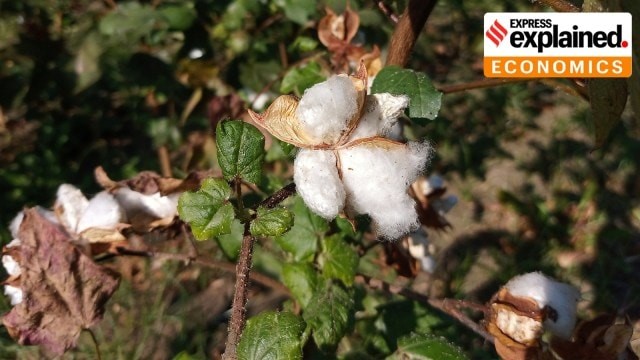Bollgard-3

- 10 Mar 2025
In News:
Punjab's cotton sector is facing a severe crisis due to increasing pest infestations and declining yields. In response, there is a rising demand for advanced genetically modified (GM) cotton varieties, particularly Bollgard-3, ahead of the 2025 sowing season.
Key Facts:
Decline in Cotton Cultivation in Punjab:
- Cotton acreage in Punjab has drastically declined from ~8 lakh hectares (1990s) to just 1 lakh hectares (2024).
- The ginning industry has also shrunk — only 22 ginning units remain functional, down from 422 in 2004.
- The main causes are whitefly (2015–16) and pink bollworm (2018–19) infestations.
About Bollgard Series of Bt Cotton:
Version Introduced in India Features
Bollgard-1 2002 Contains Cry1Ac gene — limited pest resistance
Bollgard-2 2006 Added Cry2Ab gene — wider pest control, still ineffective against
whiteflies and pink bollworms
Bollgard-3 Not approved in India Contains Cry1Ac, Cry2Ab, and Vip3A — effective against
lepidopteran pests like pink bollworm
- Bollgard-3, developed by Monsanto, offers enhanced pest resistance, but remains unapproved in India despite global usage.
- Bt (Bacillus thuringiensis) is a soil-dwelling bacterium used in GM crops for pest resistance by producing insecticidal proteins.
Alternative in Pipeline – BG-2RRF:
- Bollgard-2 Roundup Ready Flex (BG-2RRF) is aherbicide-tolerant GM cotton variety pending final regulatory approval in India.
- Enables better weed control and potentially reduces pest hosts, boosting yield.
- Field trials for BG-2RRF were conducted in 2012–13, but commercial approval remains pending.
- Experts argue that regulatory hurdles are delaying the adoption of next-generation GM seed technologies, affecting India's cotton competitiveness.
Current Agronomic Recommendations:
- In absence of new GM varieties, experts suggest:
- High-density planting
- Drip fertigation
- Proper seeding and mulching
- However, pest management remains a critical issue under current practices.
Comparative Global Context:
- Countries like Brazil are using Bollgard-5, achieving yields of 2400 kg/ha, compared to 450 kg/ha in India.
- India's profit margin from cotton is just 15%, whereas Brazil enjoys 85% margins due to advanced biotech adoption.
